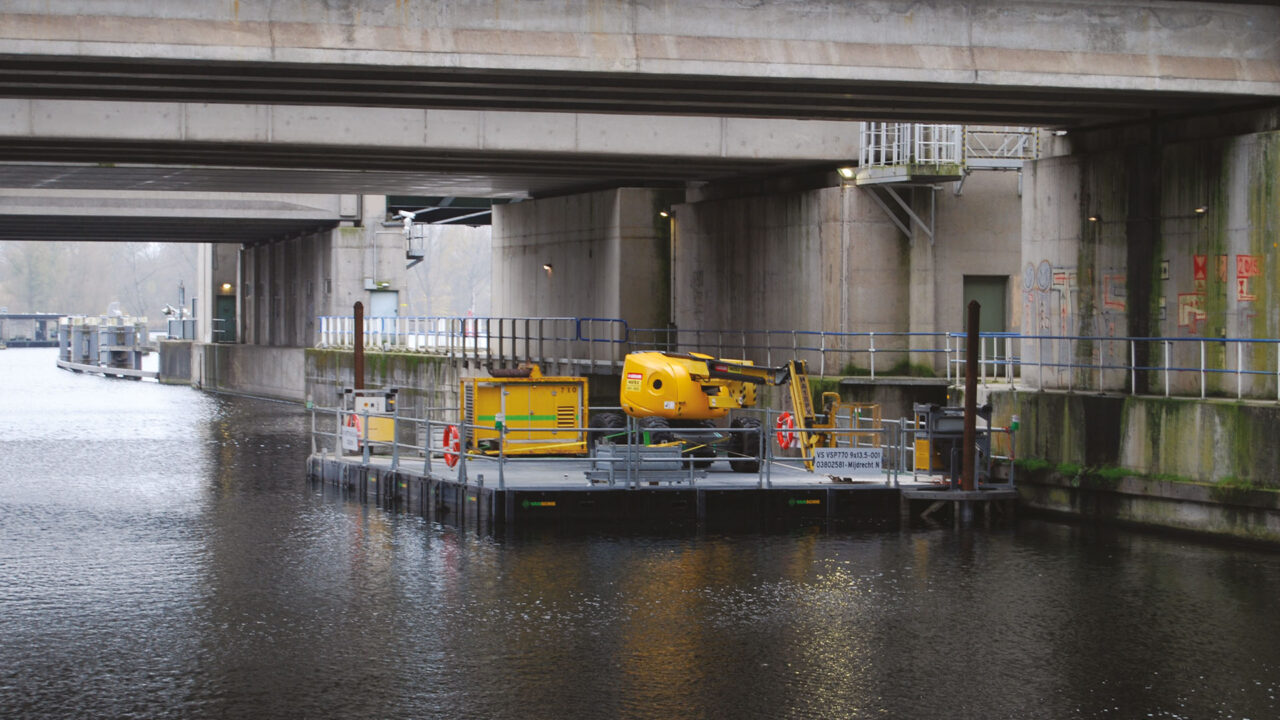Van Schie is one of the few in the Netherlands that can quickly make these approved pontoon formations for equipment available to third parties and can also provide all necessary certificates, calculations and documentations.
Compositions of linkable pontoons are subject to the laws and regulations for inland navigation. Like barges, they must be inspected, certified and registered in conjunction with the machinery on them. They will have a mark and a registration number that must be visibly attached to the pontoon, just like a license plate on a car.
The inspection includes an inspection of the hull (of individual pontoons), skin thickness and plating. Fences are also being scrutinized. In addition, stability and strength calculations are performed and the condition of the coupling device is examined.
All under the auspices of a recognized certification agency. That agency also checks that all safety equipment is on board, including life buoys, life jackets, fire extinguishers, a first aid kit and any navigation lights.
And once the certificate has been issued, it is the Inspectorate for the Environment and Transport (ILT), the Department of Public Works, the provinces and municipalities that enforce the rules.









